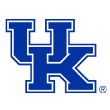|
If the first two months of the college basketball season have shown us anything, it's that no team is perfect -- or even close to perfect, in fact. For the first time since at least 1948 (when the Associated Press began doing college basketball polls), every Division I team had at least one loss before January. Some would consider Michigan State, Duke and Villanova a step above the rest of the country, but that group includes a team that lost to Boston College and one that allowed 101 points and 68.2 percent shooting from the 3-point line in a loss to Butler. Michigan State hasn't played a top-100 BPI team since November, so while the Spartans are clearly very good, they still have something to prove. But if each potential title contender could get some help immediately, what would it be?  Michigan State Spartans: Limiting turnovers
There's not much the Spartans don't have. They can make shots from the perimeter, they can score in the paint, they have a versatile offensive weapon in Miles Bridges and they really defend. Cassius Winston has taken a major step forward at point guard, so this isn't an indictment on his play, but the lone weakness for Michigan State might be its inability to take care of the ball. The Spartans have improved in the past couple of weeks -- against mostly inferior competition -- but they coughed it up on nearly a third of their possessions against North Carolina earlier this season and on more than 20 percent of possessions against Duke and Notre Dame. It was an issue last season too, and it remains something of a problem.  Duke Blue Devils: Shot-blocking rim protection
The Blue Devils have as much talent as anyone in the country, but they've had defensive issues all season. They've allowed more than one point per possession in eight games, including 1.15 against Florida State over the weekend. When Duke plays zone, it's better. But Mike Krzyzewski clearly wants to play man-to-man, and the Blue Devils get carved up whenever they switch to it. Boston College beat Duke using mostly ball screens, and Florida State is the latest in a long list of teams to have no issues going off the dribble against Duke. Ironically, if Duke had a shot-blocker like Florida State does in Ike Obiagu, the overall defense would undoubtedly improve. Bigs Marvin Bagley III and Wendell Carter Jr. play together often, and neither is great away from the rim and neither makes up for it with shot-blocking ability.  Arizona State Sun Devils: Size and depth up front
Even in a loss at Arizona over the weekend, Arizona State proved its nonconference success wasn't a fluke. The Sun Devils are indeed reliant on the 3-point shot, which isn't an issue in itself; but playing so many perimeter players together at once has hurt them on the defensive end and on the glass. Arizona State didn't have a prayer of defending Deandre Ayton and Dusan Ristic together, and even Rawle Alkins had success taking Tra Holder or Shannon Evans II into the post. Overall, Arizona ranks in the bottom 100 nationally in defensive rebounding efficiency. The arrival of Mickey Mitchell has helped ASU somewhat, but freshman Romello White has slowed down after a hot start. Injured freshman Kimani Lawrence won't help inside, but he'll help with size on the wing.  Villanova Wildcats: Return to health
Jay Wright has never been one to use a ton of guys, normally not even fulfilling his allotment of 13 scholarships. But Villanova is noticeably thin this season after injuries to freshman guards Collin Gillespie and Jermaine Samuels. The Wildcats used eight guys against Butler over the weekend, but only six played more than six minutes. Wright will need to get quality minutes from big men Dhamir Cosby-Roundtree and Tim Delaney off the bench, while also needing Jalen Brunson, Phil Booth and Donte DiVincenzo to average 30-plus minutes for the next few weeks. It's especially unfortunate, given that Samuels played his best game of the season right before the injury. Once Samuels and Gillespie return, this won't be a huge issue -- unless Brunson gets hurt.  Xavier Musketeers: Better man-to-man defense
The Musketeers are as tough as any team in the country, with legitimate offensive go-to guys Trevon Bluiett and J.P. Macura. However, Xavier has been a heavy zone team, due to the inability to consistently guard in a man-to-man defense. Neither Bluiett nor Macura is a lockdown defender, and the Musketeers have had their most success in a zone defense. Looking back, switching to a 2-3 zone in March last season helped with their Elite Eight run -- and they're using a 1-3-1 zone now. It's not the worst problem to have, as teams have won big in the past by playing zone; but if Xavier comes across a team well-equipped to score against their zone, the Musketeers will need to be able to lock up man-to-man.  Oklahoma Sooners: Consistent supporting cast for Trae Young
Young is fantastic. The freshman guard is leading the nation in scoring and assists, and he is enough to carry the Sooners to a very successful season. But as good as Young is, he'll need help moving forward. Fortunately for Lon Kruger, Young's teammates have obliged in some big spots. Kameron McGusty went for 22 points against TCU over the weekend, and Brady Manek had 21 points against Wichita State last month. Christian James also has been a major asset at times. There will be games, at least in theory, where Young is struggling with his shot or having a tough time making plays for others. Kruger will need someone else to step up. So far, that has happened in Oklahoma's big wins.  North Carolina Tar Heels: Bona fide third option on offense
The Tar Heels aren't as balanced and deep as they have been in the past, relying heavily on Joel Berry II and Luke Maye to carry the offense on a game-to-game basis. If one of them struggles, which has happened a couple of times this season, North Carolina is far less dangerous on the offensive end. Kenny Williams has been a very good perimeter shooter, but he's just 3-for-12 in his past three games from 3-point range. If he can post 12 to 14 points every night, Carolina should be fine offensively. The X factor here is Cameron Johnson. He missed the first 11 games of the season due to injury, but he has scored in double-figures in each of his three games since returning. He's 6-foot-8 and can really shoot from the perimeter, giving Roy Williams more options and versatility with his lineup construction.  Purdue Boilermakers: Bench scoring
To be honest, Matt Painter has as complete a team as there is in the country. The Boilermakers have size, shooting, ballhandling and playmakers. They can really defend in the half court, contesting shots and not fouling. So what could they use? A legitimate offensive weapon off the bench. No one outside the five starters is a big scorer, with the entire bench combining for a total of three double-figure scoring games this season. Painter does have a long list of weapons in the starting five, so they're able to overcome slow nights from the go-to-guys, but there isn't a proven option to heat up off the bench. Former ESPN 100 recruit Nojel Eastern is playing more lately, and Ryan Cline is a solid perimeter shooter; will one of them be needed to step up in March?  Arizona Wildcats: Consistency defensively and at point guard
Sean Miller's team hasn't lost since returning from the Bahamas, rattling off eight straight wins -- including victories over Texas A&M and Arizona State. The Wildcats are starting to come together, looking like the national title contender we all thought they would be in the preseason. But they're going to need to guard better moving forward. Miller's teams are usually predicated on the defensive end, but this is his worst defense since 2011. With shot-blockers such as Ayton and Ristic down low and physical wings such as Alkins, that shouldn't be the case. As for the second part of the equation, Parker Jackson-Cartwright has been acceptable so far this season. But can Jackson-Cartwright hold his own for six straight games in March? That could be the ultimate key for the Wildcats.  Texas A&M Aggies: A full roster
It's hard to judge the Aggies' past few weeks, as DJ Hogg has been suspended for two games and Admon Gilder is still injured. JJ Caldwell and TJ Starks also were suspended for one game, and Caldwell missed the first four games of the season due to suspension. Robert Williams missed two games due to concussion and also missed the first two games with a suspension. You get the point. Billy Kennedy has rarely had his full roster for a game this season, and we saw the ramifications over the weekend in a 22-point loss at Alabama. Hogg is out one more game and Gilder could return soon. At full strength, A&M can win the SEC. Anything less and Kennedy is going to have an inconsistent group on his hands.  Wichita State Shockers: Healthy Markis McDuffie
The Shockers have had a few slip-ups this season but are still the American Athletic Conference favorite and will be expected to win a few games in March. But they need McDuffie back and fully healthy. McDuffie returned in late December, playing in two games after missing the first month of the season with a stress fracture in his left foot. McDuffie only played a combined 25 minutes in his first two games, going 2-for-10 from the floor and scoring seven points. The 6-8 forward led Wichita in scoring and rebounding last season and was named first-team All-Missouri Valley. He helps at both ends of the floor, and Gregg Marshall needs that boost.  Kansas Jayhawks: Frontcourt reinforcements to actually play
As currently constructed, the Jayhawks don't have what it takes to win it all. After Tuesday's loss to Texas Tech, it's fair to question whether they're even still the Big 12 favorite. They're overly reliant on the 3-point shot, lack depth up front, and haven't been getting to the free throw line as much as they need to. Kansas could get an influx of players in the next few weeks. ESPN 100 forward Silvio De Sousa reclassified and enrolled late last month, but he has yet to play. Five-star freshman Billy Preston has been out all season due to an investigation into a November car accident. Arizona State transfer Sam Cunliffe has played in four games since becoming eligible, but didn't get off the bench against Texas. It's still Kansas and it's still Bill Self, though, so maybe the new additions will help Self work his magic.  West Virginia Mountaineers: Esa Ahmad
Bob Huggins has the Mountaineers rolling again, winning 13 in a row since being routed in the season opener against Texas A&M. They're doing the usual "Press Virginia" routine -- forcing turnovers and grabbing offensive rebounds -- and wearing teams down in the process. The Mountaineers are better in the half court than they've been in the past, but they're still predicated upon getting points off turnovers. Can Ahmad help in that regard? He was ruled ineligible for the first half of season after failing to meet NCAA eligibility requirements, but he will become eligible Jan. 13 against Texas Tech. After averaging 11.3 points last season, Ahmad will help West Virginia's half-court offense, due to his ability to score around the rim, which in turn helps with the Mountaineers' pressure.  Virginia Cavaliers: Aggressive perimeter playmaker
Under Tony Bennett, we know exactly what Virginia is. The Cavaliers slow the game down, really defend and don't mind winning games in the 50s. That's still the case this season, as Virginia ranks last nationally in tempo and first nationally in defensive efficiency. But when the Cavaliers have been at their best over the past several years, they have guys who can go get buckets when needed on offense. During the three-year run from 2013 to 2016, when Virginia won 89 games, the Cavaliers had borderline top-25 offenses every season -- and they had Malcolm Brogdon. Who can consistently get their own shot on this Virginia roster? That will more than likely fall to Kyle Guy and Ty Jerome.  Kentucky Wildcats: Perimeter shooting
John Calipari still isn't sure what type of team he has, and, therefore, neither does anyone else. But in Kentucky's two biggest wins so far this season -- over Virginia Tech and Louisville -- the Wildcats shot 50 percent and 46.2 percent, respectively, from 3-point range. In their two losses -- to Kansas and UCLA -- they shot 23.1 percent and 28.6 percent, respectively, from behind the arc. Kentucky is still coming together on the defensive end and needs consistent point guard play from Quade Green and Shai Gilgeous-Alexander, but making perimeter shots covers up other weaknesses. Calipari will hope the hot 3-point shooting in the big wins carries over to SEC play on a regular basis.
|


